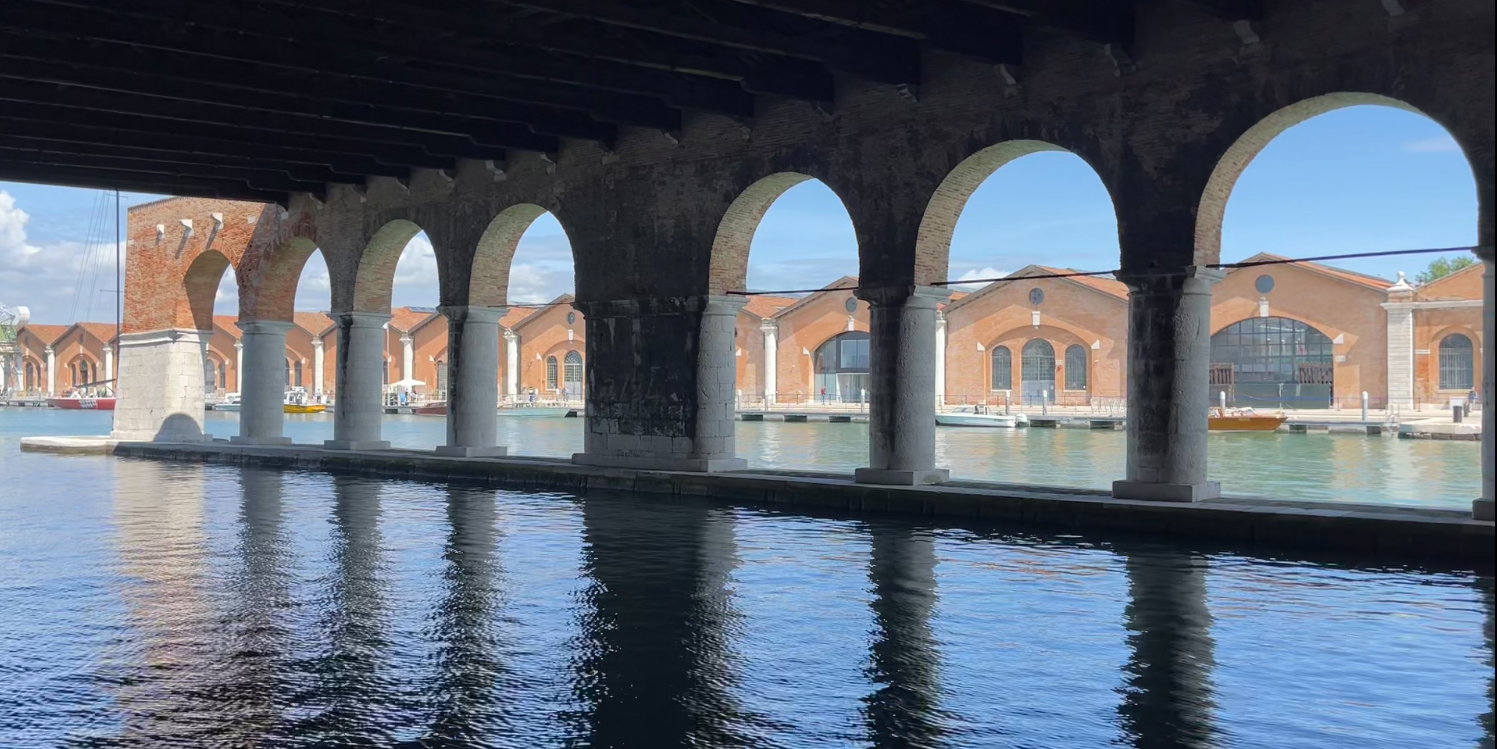The Venice Biennale 2025 is now officially open.
Last week’s Biennale preview days brought together many of our ITA community. We congratulate all our ITA faculty, researchers, and collaborators who have successfully authored, co-authored, or contributed to this year’s exhibition through projects.

The following ITA projects are exhibited in this year's Biennale:
PICONPLANKTONICS, at the CanadianPavilion, commissioned by the Canada Council for the Arts | Conseil des arts du Canada, a project by the “Living Room Collective” led by Andrea Ling, doctoral researcher at Digital Building Technologies, ETH Zurich, with Nicholas Hoban, Vincent Hui and Clayton Lee. The project is an exploration into BiologicalArchitecture, showcasing structures with embedded living cells, grown here at the Institute of Technology in Architecture, ETH Zurich. Full project details can be found externe Seite here.
ANTI-RUIN, at the Turkish Pavilion, designed by OZRUH, this structure was printed using recycled stone dust and large-scale binder jet 3D printer here at our institute, with printing led by Dr. Pietro Odaglia, researcher at Digital Building Technologies, ETH Zurich, in collaboration with Dr. Magda Posani and Dr. Vera Voney (material development), and formDP (structural engineering). This project investigates the concept of antifragility in architecture.
GEOLOGICAL MICROBIAL FORMATIONS, at the Arsenale, a live 3D printing installation, exploring bio cementation as a way to transform construction waste into architectural materials. This is a project by Dr. Karen Antorveza and Prof. Benjamin Dillenburger at Digital Building Technologies, ETH Zurich in collaboration with Robert Kindler (material science), Wood Materials Science Group, D-BAUG, ETH Zurich, Dr. Dimitrios Terzis (technology advisor) BIO-Geos, EPFL, Lausanne. Full project details can be found here.
A ROBOT’S DREAM, at the Arsenale, a project by Gramazio Kohler Research, MESH, Studio Armin Linke, and others. This project is an installation of robotically fabricated rebar steel cages with a humanoid robot suspended at the centre, and explores the relationship between automation, craftsmanship, and materiality in architecture. Full project details can be found here.